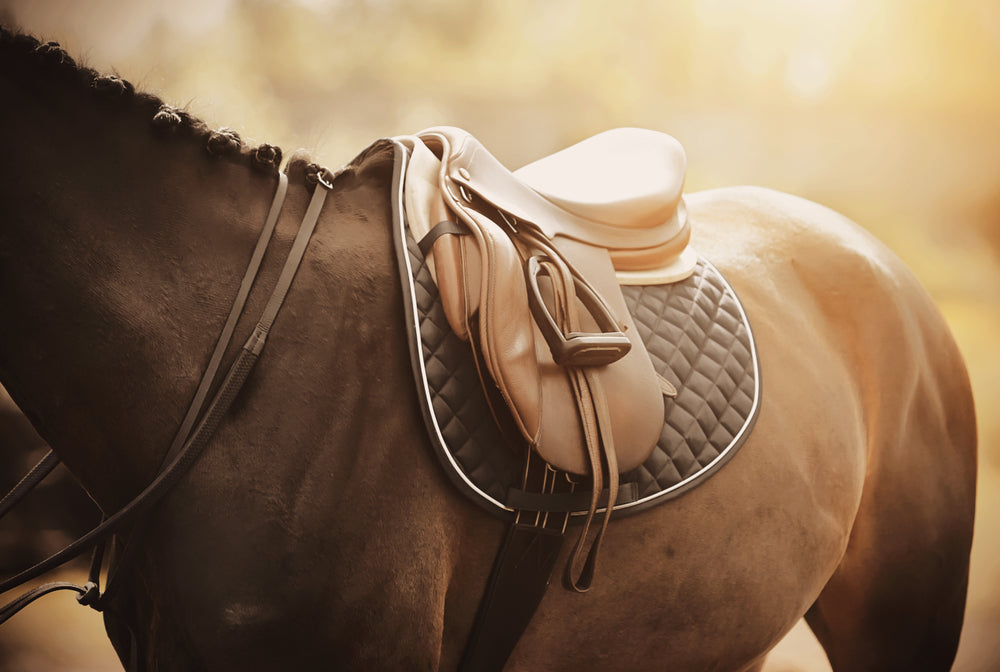
How to Accurately Measure the Gullet of a Dressage Saddle?
Share
When it comes to ensuring your horse's comfort and performance, understanding how to measure the gullet of a dressage saddle is crucial. The gullet is the channel that runs down the saddle, allowing for freedom of movement and airflow to the horse's spine. A poorly fitted saddle can lead to discomfort or even injury, affecting your horse's health and overall performance.
The importance of proper saddle fitting cannot be overstated. With the right tools and knowledge, you can ensure that your dressage saddle fits perfectly, allowing your horse to perform at its best while keeping them healthy. In this article, we will guide you step-by-step on how to measure the gullet of a dressage saddle, covering tools, techniques, and additional tips for the best results.

What is the Gullet of a Dressage Saddle?
The gullet of the saddle is an important aspect that many riders might overlook. It refers to the area situated between the two sides of the saddle where it sits above the horses withers and spine. A proper gullet width ensures that the saddle does not pinch or rub against your horse, providing them with freedom of movement and overall comfort.
For any health-conscious pet owner, ensuring your horses comfort by understanding the gullet is paramount. A saddle that fits well will not only provide your horse with comfort but will also enhance their performance in competitions.

Necessary Tools to Measure the Gullet
- Flexible Measuring Tape: This is essential for measuring the width and angle of the gullet.
- Saddle Pads: To protect the horses back and maintain hygiene during measurement.
- Caliper or Ruler: Useful for detailed measurements of gullet depth and width.
- Assistant: Having someone to help you during the measurement can provide better accuracy and ensure the horse is still and comfortable.

Step-by-Step Guide on Measuring the Gullet
Measuring the gullet of a dressage saddle requires accuracy and attention to detail. Follow these steps closely for the best outcome:
Step 1: Position Your Horse
Begin by ensuring your horse is standing on a flat, level surface. Ensure that they are relaxed and not stressed to obtain an accurate reading of gullet width and fit.
Step 2: Place the Saddle on the Horse
Gently place the saddle on the horses back, ensuring it sits comfortably over their withers without putting pressure on their spine.
Step 3: Measure the Width of the Gullet
Using your flexible measuring tape, measure the width of the gullet from one side to the other. Ideally, the width should accommodate the horse's withers comfortably. A general guide is that the gullet should be wider than the withers by at least 1 inch to allow for proper clearance. A narrower gullet may lead to discomfort, while an excessively wide one may cause the saddle to move, affecting stability.
Step 4: Measure the Gullet Depth
Next, measure the depth of the gullet. This is a bit more challenging, but using a caliper will help immensely. The depth is crucial for ensuring that the saddle does not apply pressure to the horse's spine. A well-designed gullet should allow for about two fingers of clearance above the horse's spine when sitting in the saddle correctly.

Common Mistakes to Avoid
When measuring the gullet, there are a few common mistakes you should be wary of:
- Incorrect Horse Position: Make sure the horse stands still and is relaxed. A moving horse can give inaccurate measurements.
- Using an Unstable Measuring Method: Always use flexible measuring tapes and tools that ensure accuracy.
- Forgetting Gullet Angle: The gullet angle should match the horse's conformation; this is often overlooked but crucial for a comfortable fit.
Benefits of Proper Gullet Measurement
By following these steps and measuring accurately, you ensure:
- Improved comfort for your horse during rides.
- Reduced risk of injuries caused by poorly fitted saddles.
- Enhanced overall performance in dressage.
- A stronger bond of trust and partnership between you and your horse.
Additional Resources for Saddle Care
For more insights on saddle fitting and care, you can refer to this guide on proper saddle fitting. Understanding the type of saddle best suited for your horse is equally significant, which can be found in further articles about the best dressage saddles.
FAQs about Measuring the Gullet
What tools do I need to measure the gullet?
You'll need a flexible measuring tape, caliper or ruler, saddle pads, and possibly an assistant for better accuracy.
How often should I check the saddle fit?
It is advisable to check the saddle fit every few months or whenever there are noticeable changes in your horse's condition or movement.
Can I measure the gullet without my horse present?
While you can measure the saddle's gullet on its own, doing it while the saddle is on the horse ensures its fit is accurate and considers the horse's unique conformation.
As an Amazon Associate, I earn from qualifying purchases.
